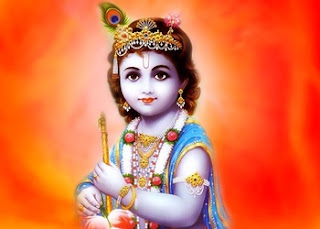Speaking Tree - When would be Krishna's next avtar?
A survey of India’s mythical past reveals that from time to time, occasion has demanded Almighty’s Grace in the form of avatars for relieving the world of its troubles. Indian tradition holds that God descended on Earth as avatars when there was some confusion, disorder and unrighteousness in society. Another crucial point related to avatars, is that they must proceed from Vishnu. He is the only god who could transform his essence into avatar-form for salvation of worldly beings. Vedas state: ‘Yo rajaamsi vimame.
manave baadhitaaya’ which implies that Vishnu traverses all over the cosmos to help afflicts mankind.
manave baadhitaaya’ which implies that Vishnu traverses all over the cosmos to help afflicts mankind.
Similarly, the Puranas also recount Vishnu’s generosity in assuming various incarnations as Parshurama and Rama in Treta Yuga; as Krishna at the junction between Dvapara and Kali Yugas, besides the five avatars of earlier ages as Matsya, Kacchapa, Varaha, Narasimha and Vamana which are symbolic representations of evolution of organic life. The Bhagavatam say that Krishna is the full-fledged avatara complete in all aspects; other stereotyped avatars are different forms of Krishna.
Janmashtami celebrating Krishna’s birthday each year assures us of the grand manifestation of the Supreme in the form of Krishna for protection of the virtuous and destruction of the wicked at the appropriate time. Puranic theology associates the avatars with the four yugas -- Sat,Treta, Dvapara and Kali. In today’s Kali Yuga, Krishna could appear in our midst at any given moment. Krishna denotes an unmeasured, incomprehensible and absolutely great personae stimulating astonishment, rapture and admiration.
At Yudhishthira’s Rajasuya sacrifice, he is declared the noblest of all beings and the great preceptor. Krishna is also known as the foremost yogi. With the amalgamation of the theistic doctrine of devotion, Krishna evolved as a personal god of love and grace in the form of Kanha Krishna at Gokul and Vrindavan apart from representing Vasudeva Krishna at Mathura and Dvaraka. Indian Tradition cherishes the two personae of Krishna -- as son of Vasudeva and as Kanha or Krishna. Bhagavata Purana adds, “Krishna turns out to be just a shadowy projection of his devotees’ travailing fancies and perceptions with regard to their god.
Krishna is also looked upon as having two bodies . One which is eternal, supracosmic and spiritual and the other which is material and temporary. Endowed with both these, he performs his double roles at Vrindavan as well as at Mathura and Dvaraka respectively. Playing the role of the avatar of Vishnu at Vrindavan, he also represents the object of bhakti in different forms -- as child to Yashoda, sportive youth to gopas and gopis at Vrindavan, friend to the gopas, brother to Balarama, beloved to the gopis, counsellor to the people of Vrindavan and also Gita preacher to Arjuna, apart from acting as destroyer of opposite forces in the form of demons, as well as the tyrant Kings at Dvaraka and finally the opponents of the Pandavas at Kurukshetra.
As an object of bhakti, Krishna appears as an embodiment of nine emotions or rasas and fulfils the nine-fold required enforcements of devotees as god in the form of a child; a youth, counsellor, friend and beloved. As the child and youth at Vrindavan, he represents the object of pure theistic devotion.
At Yudhishthira’s Rajasuya sacrifice, he is declared the noblest of all beings and the great preceptor. Krishna is also known as the foremost yogi. With the amalgamation of the theistic doctrine of devotion, Krishna evolved as a personal god of love and grace in the form of Kanha Krishna at Gokul and Vrindavan apart from representing Vasudeva Krishna at Mathura and Dvaraka. Indian Tradition cherishes the two personae of Krishna -- as son of Vasudeva and as Kanha or Krishna. Bhagavata Purana adds, “Krishna turns out to be just a shadowy projection of his devotees’ travailing fancies and perceptions with regard to their god.
Krishna is also looked upon as having two bodies . One which is eternal, supracosmic and spiritual and the other which is material and temporary. Endowed with both these, he performs his double roles at Vrindavan as well as at Mathura and Dvaraka respectively. Playing the role of the avatar of Vishnu at Vrindavan, he also represents the object of bhakti in different forms -- as child to Yashoda, sportive youth to gopas and gopis at Vrindavan, friend to the gopas, brother to Balarama, beloved to the gopis, counsellor to the people of Vrindavan and also Gita preacher to Arjuna, apart from acting as destroyer of opposite forces in the form of demons, as well as the tyrant Kings at Dvaraka and finally the opponents of the Pandavas at Kurukshetra.
As an object of bhakti, Krishna appears as an embodiment of nine emotions or rasas and fulfils the nine-fold required enforcements of devotees as god in the form of a child; a youth, counsellor, friend and beloved. As the child and youth at Vrindavan, he represents the object of pure theistic devotion.

No comments:
Post a Comment